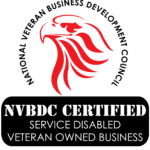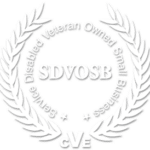As construction management professionals, ensuring the safety of all workers on a project site is paramount. In the federal construction industry, USACE (United States Army Corps of Engineers) projects require the use of Activity Hazard Analysis (AHA) forms to address specific job safety concerns. This blog post aims to educate and inform construction professionals about the importance of these required forms and their role in maintaining safety standards on USACE projects.
What are Activity Hazard Analysis (AHA) Forms?
AHA forms are written documents that identify potential hazards and safety concerns associated with specific tasks on a USACE project. These forms are created in accordance with the USACE EM-385-1-1 safety document and are required for every definable feature of work (DFOW). The DFOWs in the AHA forms overlap with the Accident Prevention Plan (APP) and the Quality Control Plan (QCP).
AHA forms are crucial to ensuring that safety procedures are followed at all stages of the construction process. Each AHA must be written and accepted (signed) by the project safety officer, who is commonly known as the Site Safety and Health Officer (SSHO) on USACE contracts.
Activity Hazard Analysis Form Breakdown
The AHA form breaks down the DFOW into several categories:
- Listing of job steps within DFOW: This section describes the specific tasks involved in each DFOW. For example, in the case of cast-in-place concrete footings, the job steps may include excavation, erecting forms, placing rebar, pouring concrete, and stripping forms.
- Hazards associated with steps listed in item 1 above: This section identifies the potential hazards and risks associated with each job step.
- Actions required to mitigate identified hazards: This section outlines the necessary actions to minimize or eliminate the identified hazards.
- Equipment required: This section lists the appropriate tools and equipment needed for each job step.
- Training required: This section specifies any necessary training for workers involved in each job step.
- Safety inspection type and frequency: This section outlines the type of safety inspection required for each job step and the frequency at which they must be conducted.
Risk Assessment Code Matrix
When filling out the AHA, the SSHO uses the Risk Assessment Code Matrix (located in the top left-hand corner of the template) to classify the appropriate level of risk associated with the DFOW. Any activities categorized with a “High” risk or greater require special attention from both government and contractor personnel.
Approval Process
All AHA forms must be signed by the contractor and approved by the government before work can proceed. Contractors cannot work without an approved AHA for the DFOW. It is essential to follow this process to ensure the safety of all workers on a USACE project site.
Activity Hazard Analysis forms play a crucial role in maintaining safety standards on USACE commercial construction projects. Understanding and correctly implementing AHA forms is vital for construction management professionals to ensure that safety procedures are followed at all stages of the construction process. By adhering to these safety guidelines, construction professionals can contribute to a safer work environment for all involved.
For a sample AHA form template, visit the following link: USACE AHA Template



